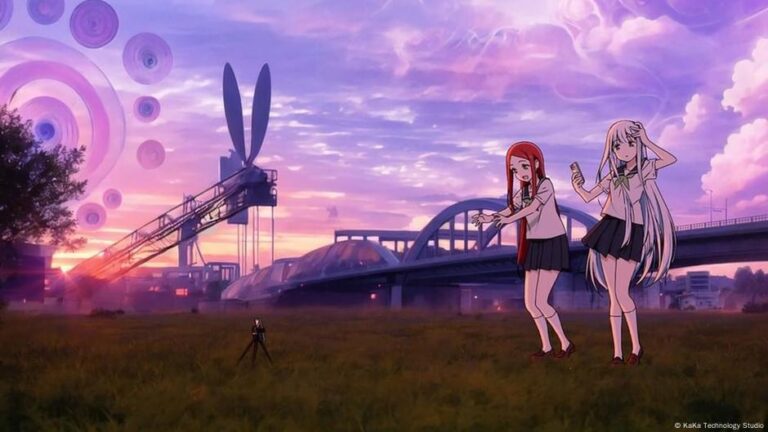When the AI Studio Ghibli filter that turns photos and videos into the beloved style of Hayao Miyazaki’s anime was released, it sparked a heated debate on artists’ copyrights.
Even though Studio Ghibli didn’t directly react to the viral trend, a 2016 interview with the company’s co-founder also widely circulated. In it, Miyazaki said that he was “utterly disgusted” by AI-generated content, calling it “an insult to life itself.”
But that hasn’t stopped Japan from pushing AI development.
Japan’s Copyright Act, amended in 2019, is largely interpreted as allowing the use of copyrighted materials to train AI tools — without the consent of the copyright holder. The law, specifically more permissive than those in the EU or the US, aims to attract AI investors to the Asian country.
Japanese artists are already worried about the developments. According to a 2023 survey by Arts Workers Japan, which collected data from nearly 27,000 respondents working in creative fields, 94% of Japanese artists have qualms about AI infringement of their copyrights.
Opening up the discussion to the public, the Japanese Agency for Cultural Affairs specified last year that the country’s permissive rule does not apply if the exploitation of copyrighted works “unreasonably prejudices the interests of the copyright holder.”
But by now, any battle for copyright protection is bound to be challenging. Even if lawmakers manage to agree that using copyrighted content to train AI models is not right, everyone has been targeted by the approach, says Charlie Fink, a professor of cinematic AI at Chapman University, California.
“So the question is, if the crime is big enough, how would you possibly begin to address the damage?” he asks.
Anime industry faces labor shortage
As part of an international brand strategy known as “Cool Japan,” the Asian country has been promoting its unique cultural productions. Anime is part of those noteworthy soft power exports.
A global anime boom pushed the Japanese market to a record high in 2023, with an output of as many as 300 TV titles that year, according to an annual report by the Association of Japanese Animations.
And AI is already part of the mix. The first AI-powered anime, “Twins Hinahima,” was launched in March this year. In 2023, a short anime clip named “Dog & The Boy” released by Netflix Japan also used AI-generated artwork to paint the backgrounds.
There is currently a labor crunch in the anime industry due to its unattractive working conditions. A 2024 report by the Nippon Anime and Film Culture Association showed that workers were overworked and underpaid, with hourly rates below the country’s minimum wage being common.
The use of AI in anime can therefore be seen as a solution to fill in the gap, points out Roland Kelts, an anime expert and visiting professor at Japan’s Waseda University School of Culture, Media and Society.
“The population is shrinking, so there are not many young artists, and they are paid very poorly to do a lot of hard labor,” he told DW.
K&K Design is an anime production studio that incorporates AI in its work. It uses a customized version of the text-to-image model Stable Diffusion. The tool helps with coloring, background generation, and turning photos and videos into anime, saving lots of time and effort, says Hiroshi Kawakami, vice president of K&K Design.
He told DW that a five-second anime clip that would typically require a week of hand-drawn work can now be produced within a day by feeding only two drawings to the AI model.
According to the Arts Workers Japan survey, about 60% of artists in Japan are worried about losing their jobs to AI.
Despite the possibility of future job losses, Kawakami stresses that AI plays a “supporting” role and will not be able to replace humans in visual judgement and creative ideation, among other areas.
A culture that embraces technology
Studios churn out anime projects for late-night TV, and AI can help produce such content, says Kelts. But he doesn’t see this as threatening creativity in the East Asian country.
Kelts explains that the Japanese do not necessarily see the perspective of having AI recreate its version of “One Piece” within a few years as a threat.
“In Shinto [Japan’s national religion], all things have a ‘kami,’ or spirit … so the Japanese are less afraid of these ideas about robotics, about AI, about tech, because technology is woven into nature.”
After all, as he points out, the first anime hero was called Astro Boy, and he was half boy, half robot.
Taking cues from Hollywood insiders
The AI trend will be affecting filmmakers worldwide, and many are already integrating the technology into their work.
Canadian independent filmmaker Taylor Nixon-Smith, who has been writing on the impact of AI on the film industry, says he uses ChatGPT to generate lists of tasks for pre-shooting, consolidate research and draft up operational contracts, but stresses that most filmmaking tasks can still only be done by humans.
“You still need a costume designer to draft up boards, you still need buyers to go out and buy things, you still need stitchers to draft up the wardrobe so it fits the actors properly,” Nixon-Smith told DW.
Charlie Fink, former Disney producer and current adjunct professor of cinematic AI at Chapman University, feels that the use of the rapidly developing tech will “lead to a new golden age of Hollywood,” one that would be “highly democratized, because an individual could make a film for a few thousand dollars,” he told DW.
Fink says that having hundreds of people involved in the production of a live-action movie will become a thing of the past.
For now, actors are still at the center of production, but Fink adds that AI performances will “totally change in the next couple of years. “
The looming threat already prompted Hollywood actors to strike last year over a lack of AI-related protections for workers.
The NO FAKES Act, targeting unauthorized AI replicas, was reintroduced last month in the US Congress. The bill gained support of entertainment giants, including Walt Disney, YouTube, SAG-AFTRA, among others — as well as OpenAI.
For Fink, however, this legislation can be seen as “the first stage of grief.” In his view, the rise of AI remains inevitable. He predicts it will slowly replace actors and producers, and suggests getting ahead of the game by learning to use AI: “Disruption also means opportunity.”
Edited by: Elizabeth Grenier


